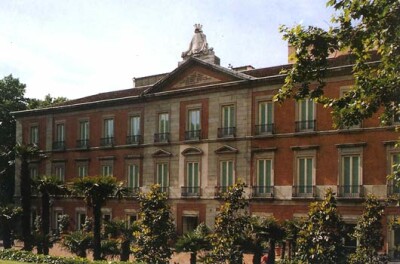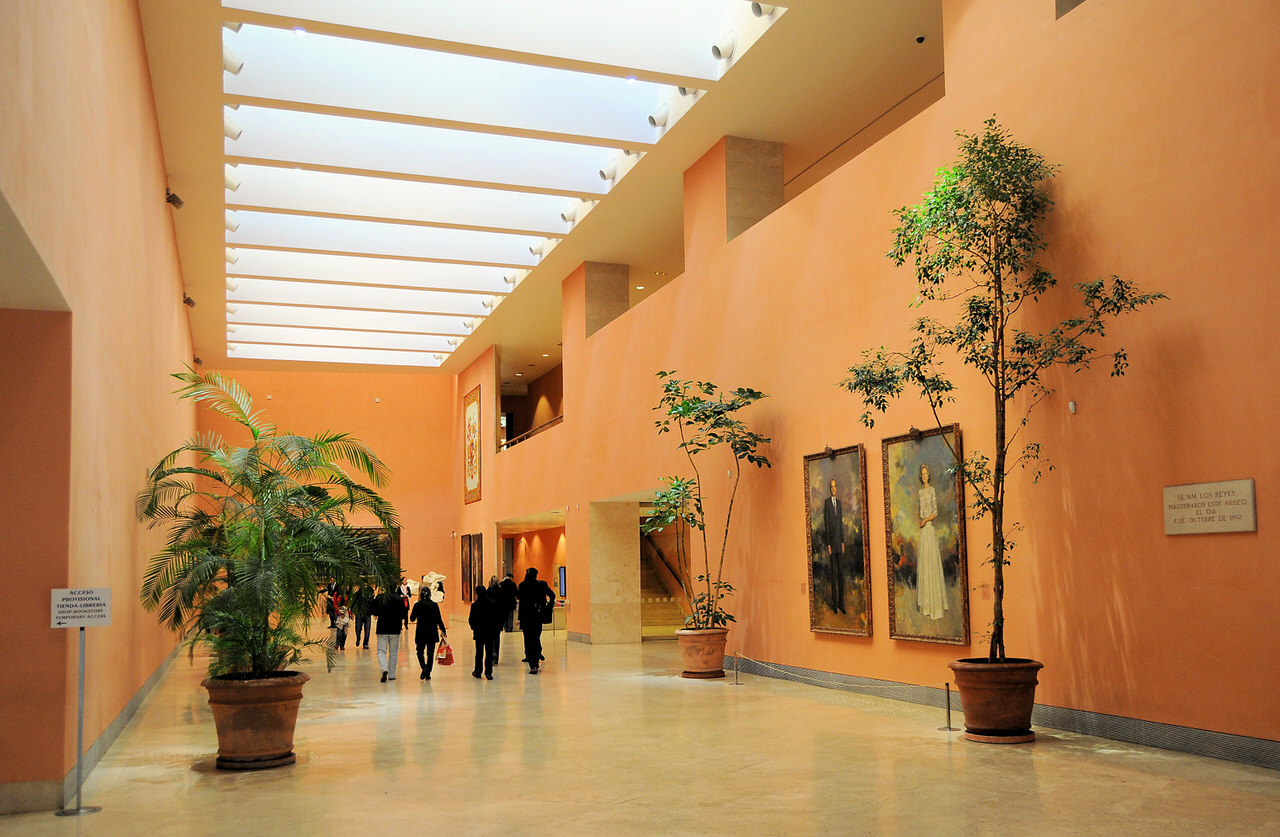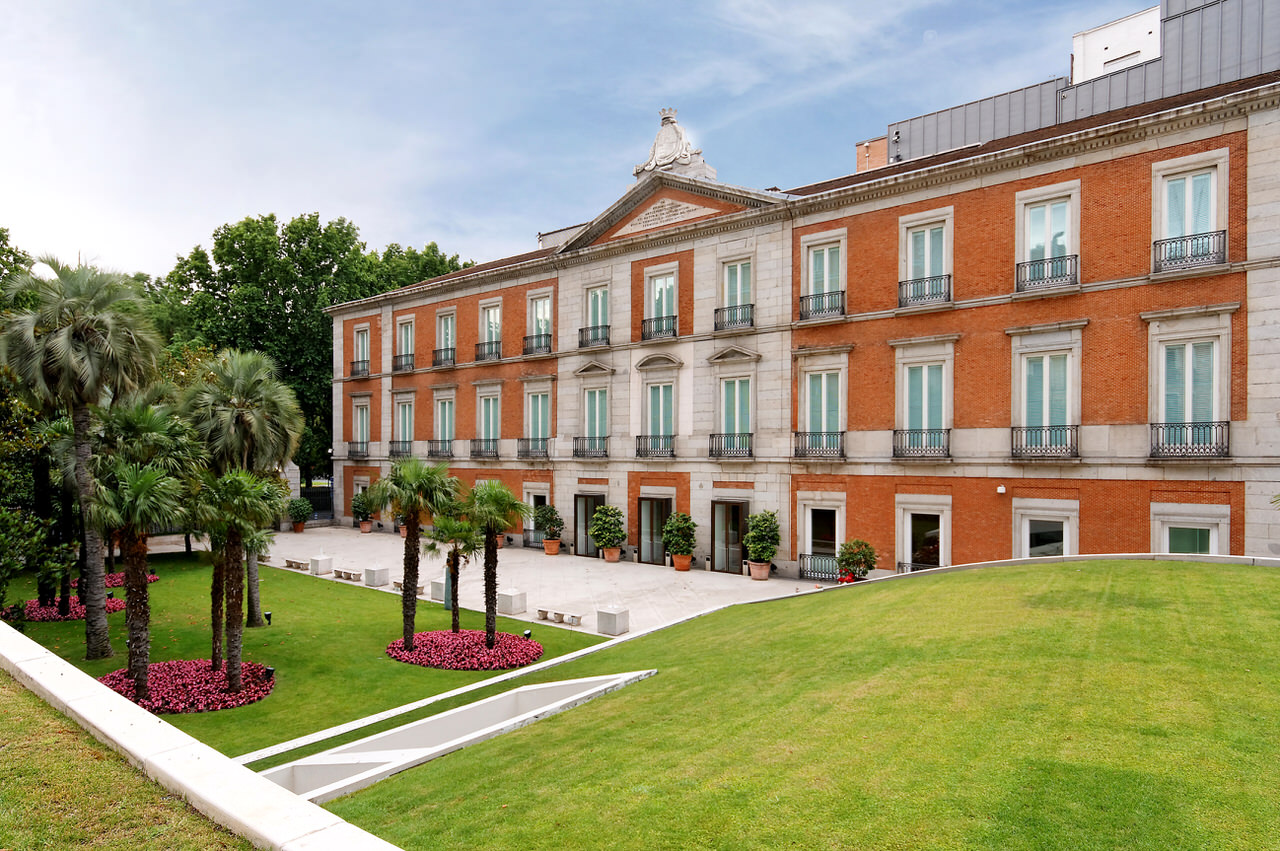The Thyssen-Bornemisza Museum (in Spanish, the Museo Thyssen-Bornemisza, named after its founder), or simply the Thyssen, is an art museum in Madrid, Spain, located near the Prado Museum at one of city's main boulevards. It is known as part of the "Golden Triangle of Art", which also includes the Prado and the Reina Sofia national galleries. The Thyssen-Bornemisza fills the historical gaps in its counterparts' collections: in the Prado's case this includes Italian primitives and works from the English, Dutch and German schools, while in the case of the Reina Sofia it concerns Impressionists, Expressionists, and European and American paintings from the second half of the 20th century.
With over 1,600 paintings, it was once the second largest private collection in the world after the British Royal Collection. A competition was held to house the core of the collection in 1987-88 after Baron Thyssen, having tried to enlarge his Museum in Villa Favorita, searched for a location in Europe.
The museum received 945,000 visitors in 2013.The collection was started in the 1920s as a private collection by Heinrich, Baron Thyssen-Bornemisza de Kászon. In a reversal of the movement of European paintings to the US during this period, one of the elder Baron's sources was the collections of American millionaires coping with the Great Depression and inheritance taxes, from which he acquired such old master paintings as Ghirlandaio's portrait of Giovanna Tornabuoni (once in the Morgan Library) and Carpaccio's Knight (from the collection of Otto Kahn). The collection was later expanded by Heinrich's son Baron Hans Heinrich Thyssen-Bornemisza (1921–2002),who assembled most of the works from his relatives' collections and proceeded to acquire large numbers of new works (from Gothic art to Lucien Freud).
The collection was initially housed in the family estate in Lugano in a twenty-room building modelled after the Neue Pinakothek in Munich. In 1988, the Baron filed a request for building a further extension designed by British architects James Stirling and Michael Wilford, but the plan was rejected by the Lugano City Council.
In 1985, the Baron married Carmen "Tita" Cervera (a former Miss Spain 1961) and introduced her to art collecting. Cervera's influence was decisive in persuading the Baron to relocate the core of his collection to Spain where the local government had a building available next to the Prado. The Thyssen-Bornemisza Museum officially opened in 1992, showing 715 works of art. A year later, the Spanish Government bought 775 works for $350 million. These pieces are now in the purpose-built museum in Madrid. After the museum opened, Cervera started her own collection and loaned 429 works to the museum in 1999 for 11 years. The loan has been renewed annually since 2012.
The Baroness remains involved with the museum. She personally decided the salmon pink tone of the interior walls and in May 2006 publicly demonstrated against plans of the Mayor of Madrid, Alberto Ruiz-Gallardón to redevelop the Paseo del Prado as she thought the works and traffic would damage the collection and the museum's appearance.












